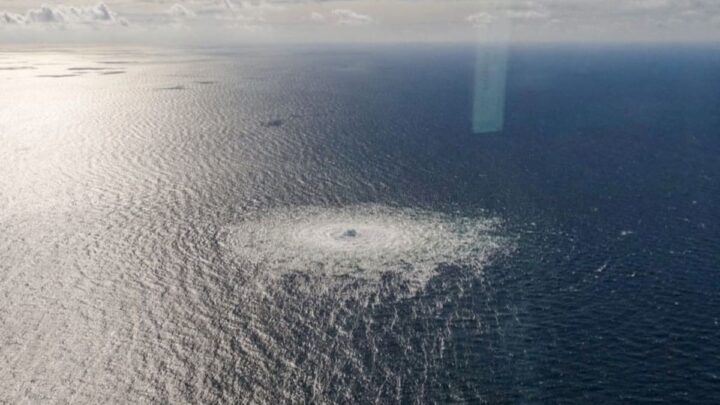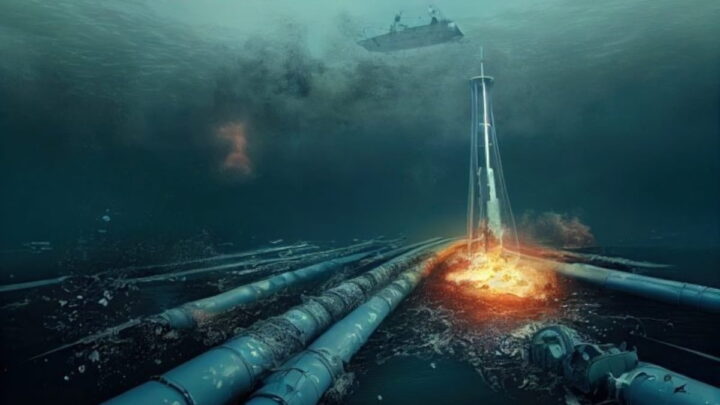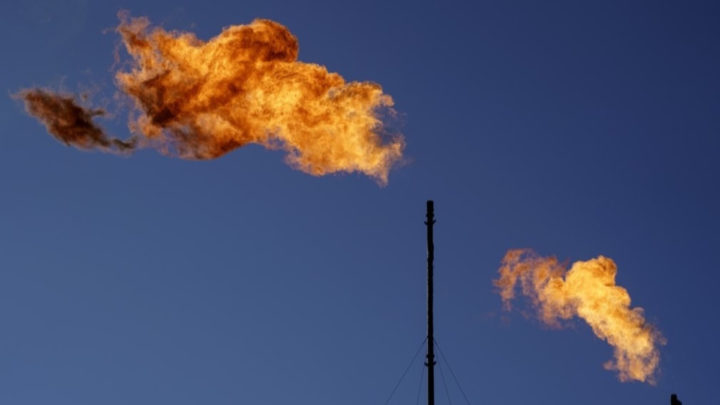In September 2022, the Nord Stream pipeline network, which transported natural gas from Russia to Western Europe via the Baltic, was destroyed by explosives. This sabotage caused the largest methane leak ever recorded, polluting as much as eight million cars in a year on average.
The sabotage of the Nord Stream gas pipeline network, which has not yet been clarified, did not only have consequences for European energy security. Effectively, It also resulted in a huge methane leak (CH₄), a greenhouse gas that is at the center of attention in the fight against climate change.
Soon after the explosions, several groups of scientists began working to try to determine the extent of the escape, providing estimates in the weeks and months that followed.
Despite the work carried out at the time, these estimates fell short, as concluded by three articles published on Wednesday in the magazine Naturewhich quantify the sabotage of the Nord Stream gas pipeline network.
Leaks contributed as much to global warming as eight million cars
As mentioned by the authors of the articles, cited by El País, around 465,000 metric tons were emitted into the atmosphere and around fifty dissolved in the sea.

According to the United Nations Environment Program (PNU), who coordinated the group of 70 scientists from 30 organizations involved in the investigation, that was the largest methane emission caused by man. After all, the 465,000 metric tons is more than twice what was previously thought.
In the short term, the Nord Stream leaks contributed as much to global warming as eight million cars driven (on average) in a year.
Furthermore, according to Luis Guanter, professor of Applied Physics at the Polytechnic University of Valencia, the number is 3.5 times greater than the largest single leak in a fossil fuel infrastructure: the one that was detected in an oil plant in 2023, in Kazakhstan.
The professor is head of the working group that detected the leak in Kazakhstan and one of the authors of the investigation published in Nature on the sabotage of the Nord Stream network.
Unlike the first, which lasted more than 200 days, the one that occurred in the Baltic Sea was only visible for around ten days, the time needed for the gas accumulated in the gas pipelines to be released.

Illustration source: Benny Marty via Shutterstock/Carbon Herald (2022)
To conclude the number of metric tons released by the leak in the Baltic Sea, discovering the amount of methane dissolved in the Baltic and the amount that escaped into the atmosphere, the researchers used atmospheric data, satellite imagery and marine observations, aerial measurements and engineering estimates.
Of the approximately 500,000 tons contained in the pipeline system at the time of the explosions, most ended up in the atmosphere. According to the article, this was due to the shallow depth at which the ruptures occurred, between 70 and 80 meters, which resulted in "the dissolution of only a small fraction of the total methane released by the pipes."
Methane is responsible for about a third of current global warming
Currently, methane is responsible for about a third of global warming. Although the time it remains in the atmosphere is much shorter, it has a much higher heat retention potential than carbon dioxide, the main greenhouse gas.
In any case, in the articles published now, researchers offer some context for understanding the real methane problem.

After all, although the sabotage of the Nord Stream network resulted in colossal emissions, the The problem continues to lie in daily leaks and deliberate ventilation by the fossil industry in oil fields, gas fields and coal mines.
In addition, it is important to consider the methane emissions from livestock and certain crops.
This escape was extraordinary in its magnitude, but it is just the tip of the iceberg. Despite their enormous size, the Nord Stream explosions accounted for just two days of methane emissions from the global oil and gas industry. There is a huge opportunity to combat this pollution, which is worsening the climate crisis.
Said, in a statement, Manfredi Caltagirone, director of the International Observatory of Methane Emissions (in English, IMEO), a UNEP body, created in 2021, which now has a major leak warning system.
Source: pplware.sapo.pt


